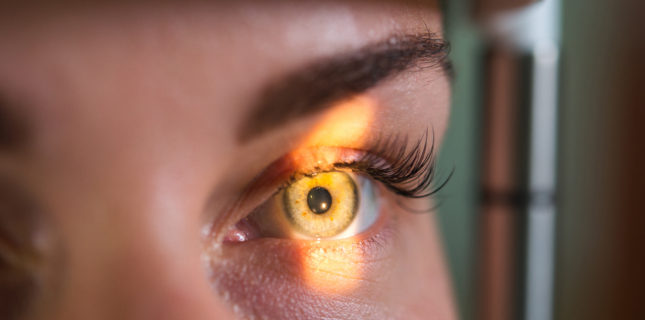
Hypertension, Cholesterol, and Vision
Approximately one third of U.S. adults over age 20 suffer from hypertension, and nearly 50% of them don’t know it. In addition, the Center for Disease Control (CDC) finds that 27.9% of Americans have high cholesterol, or hyperlipidemia. Typically, patients report no symptoms at all.
Tip: Eye exams can “facilitate the management of undiagnosed medical conditions,” especially hypertension, diabetes, and high cholesterol.
That being said, optometrists are in a position to make a big difference…and sometimes a life-saving one. An excellent resource that underscores the important role of eye exams, and can be used to help address the subject of controlling blood pressure with patients and staff, is the AOA’s whitepaper, “Hypertension 3 Ws.”
(https://www.aoa.org/optometrists/tools-and-resources/clinical-care-publications/hypertension)
IDENTIFICATION + INTERVENTION
According to a UnitedHealthcare study, “Eye exams can facilitate identification and intervention of various high-cost chronic diseases.” They can also “facilitate the management of undiagnosed medical conditions,” especially hypertension, diabetes, and high cholesterol.
Here are some key points as well as resources to help educate staff on the subject and how your practice can help.
(https://www.unitedhealthgroup.com/newsroom/2014/0220studyeyeexamschronicconditions.print.html)
SYMPTOMS
Though hypertensive patients often present with visual symptoms, some report complaints (though they don’t associate it with hypertension or high cholesterol) of fatigue, headache, blurred or on/off again vision changes, lightheadedness, and vertigo. While these ocular and vision symptoms are linked to many conditions, it’s important for staff to understand that they can be tied to a systemic condition like high blood pressure.
COMMON SIGNS
While you already recognize the signs, staff may not. For example, one ocular sign of high cholesterol is a bluish ring that forms near the outside of the cornea. Called “arcus senilis,” these rings appear most commonly with age as more cholesterol gets deposited into the cornea. Another sign is small, soft, yellowish elevations of skin above the eyes and near the nose. Called xanthelasma, they can (but not always) indicate high cholesterol.
(https://www.sunyopt.edu/health-insights/cholesterol-and-your-eyes-and-vision)
WORST-CASE SCENARIO
One far more serious sign is Hollenhorst plaque that can be observed inside a small artery within the eye. According to SUNY College of Optometry, “This is a buildup of cholesterol that has broken off from a clot ‘upstream.’ The plaque will block the flow of blood further downstream, therefore occluding that artery and causing death to the tissue fed by it. This can result in a quick and irreversible loss of function, which could include blindness of the affected eye…or find its way to the brain.” If a small blood vessel that feeds a part of the brain is occluded, the result is a vision- and life-threatening stroke.
(https://www.sunyopt.edu/health-insights/cholesterol-and-your-eyes-and-vision)
That’s one reason why the AOA stresses the importance of “discussing and explaining to your patients the need to control their blood pressure to prevent the devastating complications that occur from hypertension.”
EYES HAVE IT
Why do the eyes play such a key role here? The SUNY College of Optometry article explains what sets them apart. “The eyes are the only place in the human body where actual blood vessels can be observed without the need to cut into the body or take special images!”
How do you discuss the far-reaching effects of high cholesterol and hypertension to both staff and patients? Tell us and share in the conversation on Facebook here.
Comments are closed.







